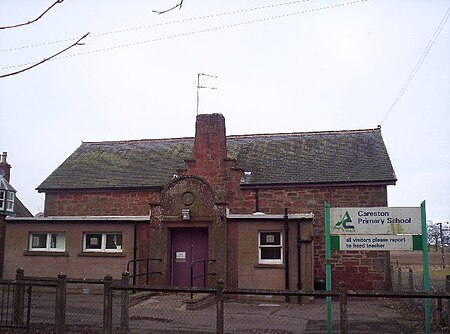Careston
Angus geography stubsUse British English from March 2017Villages in Angus, Scotland

Careston is a hamlet in Angus, Scotland, that is in the parish of the same name, 5 miles west of Brechin. The parish and hamlet supposedly took their name from a stone laid in commemoration of a Danish chieftain, called Caraldston. It has a castle and church, although the local primary school closed in 2004. Careston railway station on the Forfar and Brechin Railway once served the hamlet.
Excerpt from the Wikipedia article Careston (License: CC BY-SA 3.0, Authors, Images).Careston
Geographical coordinates (GPS) Address Nearby Places Show on map
Geographical coordinates (GPS)
| Latitude | Longitude |
|---|---|
| N 56.732905 ° | E -2.764892 ° |
Address
DD9 6SD
Scotland, United Kingdom
Open on Google Maps







